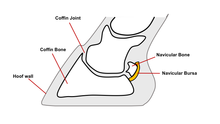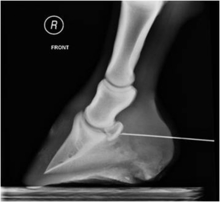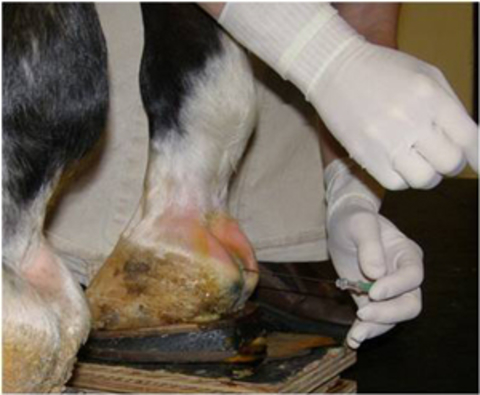Quick facts
-
Injecting the coffin joint with triamcinolone acetonide (TA) is a good way to deliver TA to the navicular bursa for horses with navicular syndrome.
-
No studies have been done to show what level of TA is needed to control pain in the joint or bursa.
Navicular syndrome commonly causes lameness in horses. Veterinarians often treat this syndrome with a coffin joint injection. This injection usually consists of the following.
-
Triamcinolone acetonide (TA), a corticosteroid
-
Sodium hyaluronate (HA)
Injecting the coffin joint relieves lameness in many cases. Some suggest injecting the corticosteroid into the navicular bursa can have better results. This type of injection is harder and requires x-rays to correctly place the needle in the bursa.
Testing injection sites
The goal of the study was to see if injecting TA into the coffin joint is a good treatment for horses with navicular syndrome.
This work was supported by grants from the AQHA, the University of Minnesota Equine Center, College of Veterinary Medicine, and University of Minnesota with funds provided by the Minnesota Racing Commission, Minnesota Agricultural Experimental Station, and contributions from private donors.
Reviewed in 2018




